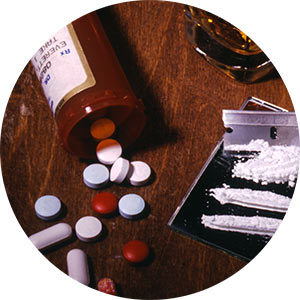
The PTSD-Addiction Connection
By Clint Fletcher
There’s a common misbelief in our country that PTSD is a disorder that only our combat soldiers suffer from after returning from war. While it’s true the PTSD rate in the US military is alarmingly high (as many as 500,000 troops from the Iraq and Afghan war), there’s also a strong correlation between PTSD and addiction as well.
Post-traumatic stress disorder develops in people that have either experienced or witnessed a life-threatening event of some kind.
Post-traumatic stress disorder develops in people that have either experienced or witnessed a life-threatening event of some kind. While it’s normal to have upsetting feelings after such an event, it is not normal for these feelings to continue for a longer period of time. If someone has nightmares, feels on edge, or troubling memory flashes past a few months after an event, they may be experiencing PTSD.
It’s not just about nightmares and feeling on edge, though. There are actually four types of PTSD symptoms. They include negative changes in beliefs or feelings, avoiding situations that remind you of the event, hyperarousal (body kicking into high alert when thinking of the trauma), and reliving the event itself through nightmares and flashbacks. Left untreated, it can cause severe mental health issues.
Frequent Co-Occurrence
Studies over the years began connecting the dots between PTSD and addiction. One earlier study showed that PTSD was much more common in substance abuse patients when compared to a group of patients with no addiction issues, while a another study revealed opioid users suffer from high rates of PTSD. In 2018, it was determined that there’s a strong correlation between PTSD and alcohol use disorder (AUD). Around one-third of individuals with lifetime PTSD also meet the criteria for AUD, while up to two-thirds of those diagnosed with AUD meet the criteria for PTSD.

The two disorders frequently co-occur because those that are led to alcohol and drugs are much more likely to have suffered emotional trauma in both childhood and adulthood. Many who struggle with addiction were initially just seeking to cope by self-medicating to manage their pain. “Self-medicating” is when someone tries to manage physical or emotional pain through drugs on their own without the direction of a physician. While some people may start by get prescription meds through a doctor for a legitimate reason, they may later abuse them in secret. Some may not even know they’re suffering from PTSD and use drugs or alcohol to manage the symptoms. And for others that do know, it may be cheaper for them to buy certain substances or abuse what they have rather than pay for therapy.
If an individual is suffering from post-traumatic stress disorder, they’re much more likely to try and manage the symptoms through self-destructive behavior.
If an individual is suffering from post-traumatic stress disorder, they’re much more likely to try and manage the symptoms through self-destructive behavior, whether that includes food, alcohol, drugs, or acting out sexually. The problem with drug addiction in particular is a person can only numb the pain for so long before they put their lives at serious risk by chasing a stronger dosage. If someone is using a powerful opioid like fentanyl or heroin to numb PTSD, for example, the risk comes much faster. Both drugs can be fatal in a matter of months, and getting help before that point is crucial.
PTSD By the Numbers
PTSD is much more prevalent in the US than we ever could have imagined, and most of us will be, or already have, faced trauma. Here are some PTSD stats from Sidran Institute in coordination with the Posttraumatic Stress Disorder Alliance.
- Approximately 1 in 13 adults (8.7%) in the US will develop PTSD in their lifetime.
- Around 70% of adults in this country have already experienced one traumatic event in their lives, and up to 20% of these people develop PTSD later on.
- Women are twice as likely to develop PTSD than men, and 1 out of 9 women will experience post-traumatic stress disorder at some point in their lives.
- Over 13 million Americans (5% of the population) have PTSD at any given time.
- The estimated risk runs highest with these types of trauma:
- Rape: 49%
- Physical assault: 31.9%
- Other sexual assault: 23.7%
- Serious accident/injury: 16.8%
- Shooting or stabbing: 15.4%
- Sudden death family member/friend: 14.3%
PTSD Treatment at The Meadows
The studies mentioned above through the last decade have brought to light the need for PTSD evaluation and treatment in the addiction recovery field. The Meadows is no exception. We treat post-traumatic stress disorder at our Intensive Outpatient Programs (IOPs) in Dallas, Scottsdale, and California’s Silicon Valley. Anyone who’s suffered from PTSD (or is suffering from substance abuse as a result) is welcome to join our world-leading trauma experts to share their stories in a safe environment.

Reach Out Today
Convenient, comprehensive care is available. Your next chapter can start right now.